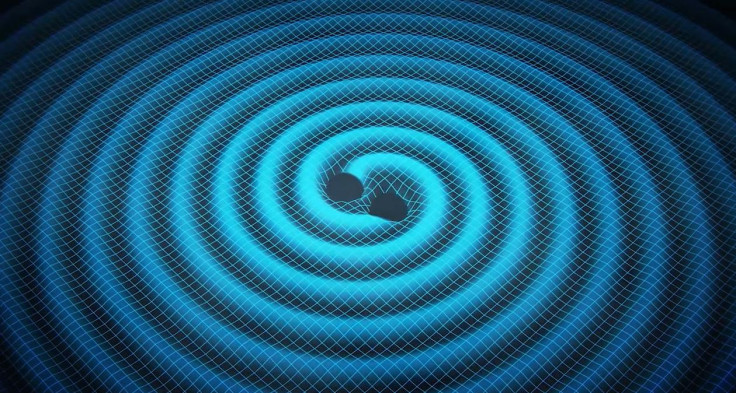Is Dark Matter Made Of Axions? Black Hole Mergers May Yield Clues

When researchers associated with the Laser Interferometer Gravitational-Wave Observatory (LIGO) — which consists of two detectors, one each in Hanford, Washington, and Livingston, Louisiana — announced the first ever detection of gravitational waves in February 2016, scientists hailed it as a new era in experimental physics. The ability to detect these ripples in the fabric of space-time, they argued, could one day allow us to create “gravitational maps” of the universe, giving us glimpses of objects and phenomena that would otherwise remain forever hidden.
According to a study published in the latest edition of the journal Physical Review D, the LIGO project — in its advanced LIGO (aLIGO) iteration — could, in theory, achieve much more. The authors of the study state that LIGO’s gravitational wave detectors may be able to detect axions — a class of hypothetical particles that some physicists believe makes up dark matter — created by spinning black holes.
Dark matter is the name given to the mysterious stuff that makes up 85 percent of the universe’s mass. The problem is, we don’t know what it’s made of. It may be Weakly Interacting Massive Particles (WIMPs), which are heavy particles that interact with normal matter only through gravity and the weak nuclear force, or axions — a class of extremely light particles whose existence is predicted by an extension of quantum chromodynamics, which is a theory that lies within the ambit of the Standard Model of particle physics.
A recent calculation, made by researchers at the Forschungszentrum Jülich research center in Germany, suggests that if axions do constitute the bulk of dark matter, they would have a mass of between 50 and 1,500 microelectronvolts, making them up to 10 billion times lighter than electrons. This means that every cubic centimeter of the universe should contain an average of 10 million axions, and regions having larger concentration of dark matter, such as our local region of the Milky Way, should contain roughly 1 trillion axions per cubic centimeter.
In the latest study, a team of researchers from the Perimeter Institute for Theoretical Physics, the Stanford Institute for Theoretical Physics, and the Center for Cosmology and Particle Physics at New York University argue that if these hypothetical particles have the predicted mass, spinning and colliding black holes should produce a cloud of axions — much like the cloud of electrons around an atom’s nucleus — due to a phenomenon known as superradiance. This should, in turn, produce gravitational waves, that can, in theory, be detected by LIGO.
In addition, LIGO’s detectors may also be able to observe changes in a black hole’s angular momentum as it is slowed down by the cloud of axions — although this approach is less promising as measuring a black hole’s spin is an extremely daunting task.
“It's an awesome idea,” Tracy Slatyer, a particle astrophysicist at the Massachusetts Institute of Technology (MIT) in Cambridge, who was not involved in the work, told Science magazine. “The [LIGO] data is going to be there, and it would be amazing if we saw something. ... This is probably the most promising paper I’ve seen so far on the new physics we might probe with gravitational waves.”
© Copyright IBTimes 2024. All rights reserved.





















